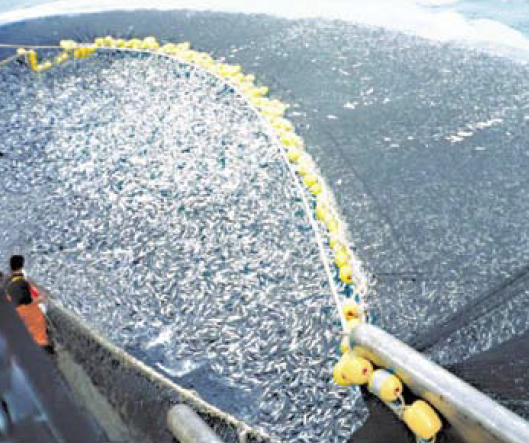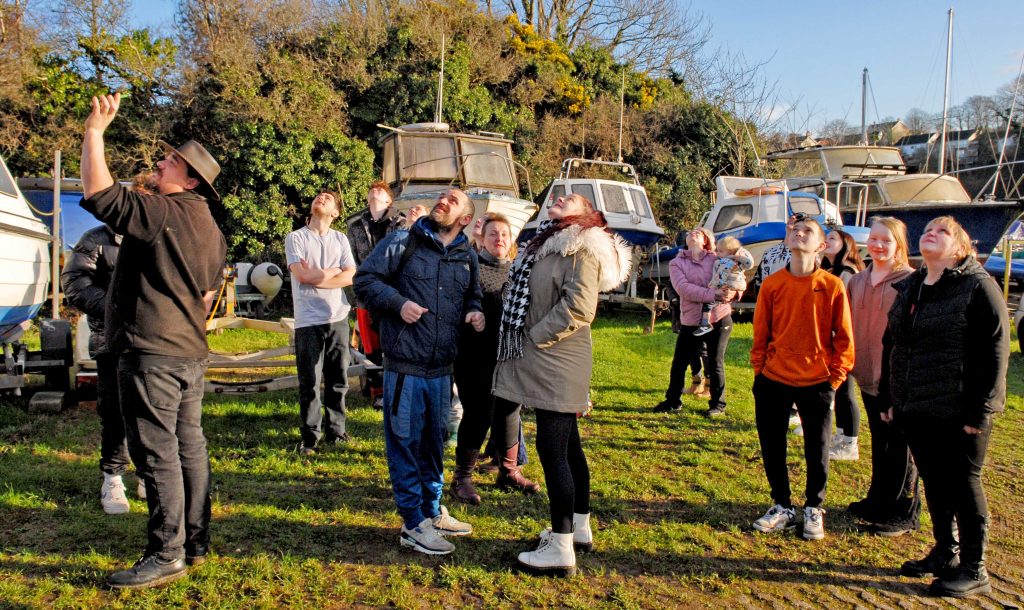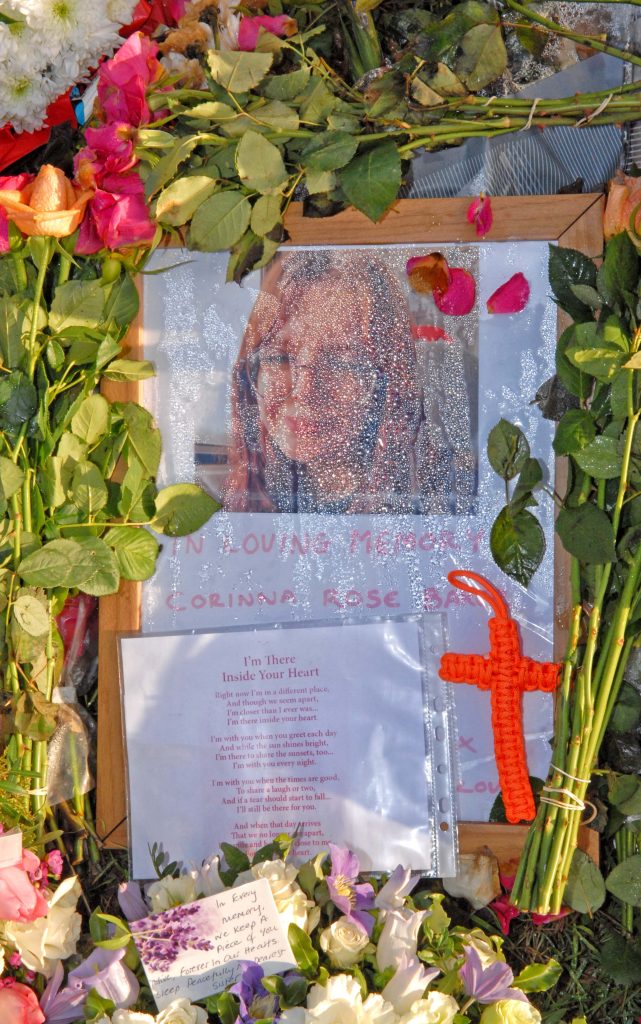News
Global hackers to solve fishy issue

 A HOST of different hackers from around the globe recently battled it out to help solve a problem set by a Pembrokeshirebased scientist.
A HOST of different hackers from around the globe recently battled it out to help solve a problem set by a Pembrokeshirebased scientist.
Between Friday April 2 2 and Sunday (Apr 24), hackers aided in filling crucial gaps in what we currently know about the state of fisheries around the world.
An army of 2,000 coders gathered in 43 different host cities across six continents for the third annual Fishackathon, solving a problem set by the Welsh ecological consultancy Salacia-Marine, WWF, Young’s Seafood and the US-based Billfish Foundation.
The coders were set the task of inventing a technology which would allow fishermen to reliably gather data about fish length and species from images taken by the on-board cameras, which is a crucial element to take into account when assessing the health of global fish stocks.
Dr Andy Woolmer, Pembrokeshire-based Marine Scientist and founder of Salacia- Marine, said: “A fundamental measurement we need is the length of the fish being caught. This gives us an indication of ages and, together with data on how many fish are being taken from the water, we can use it to derive a range of other important statistics which can help us manage fisheries more sustainably.
“At the moment, this data is available for less than half the global catch. Traditionally we’ve relied on measuring fish by hand at sea, which is time-consuming and expensive.
“If the Fishackathon can come up with a solution to our problem, it has the potential to transform our knowledge of fish stocks around the world.”
The challenge was developed in partnership with fishermen as part of the Cardiff-based EU LIFE+ funded Celtic Seas Partnership, a WWFled project aiming to bring people together to create a more sustainable future for our marine environment.
This challenge is one of nine selected by a global panel of experts. The Fishackathon was established by the US State Department to find ways of overcoming the big technical hurdles facing sustainable fishing.
WWF-UK’s Head of Marine Policy Dr Lyndsey Dodds said: “Fish are a critical part of the global marine ecosystem. Millions of people around the world depend on fish for their livelihoods and more than three billion of us rely on seafood as a major source of protein.
“In 2015, our Living Blue Planet report showed that populations of some marine species around the world, including a number of important fish populations, are in decline.
“WWF is working with the fishing industry to help identify solutions to some of the problems faced in achieving sustainable fisheries.
“By putting this problem forward to the Fishackathon with industry partners, we hope the hackers can help us find a solution that’s not just applicable in the UK but across the world.”
The problem which has been put forward to the Fishackathon builds on the previous winning solution ‘Fish-otron’, which showed how it is possible to make quick and accurate length measurements from images collected by the on-board boat cameras.
However, at the moment there is no technology that can distinguish, reliably, between the different species of commercial fish. What is hoped would be created in this year’s Fishackathon is a piece of tech that can both provide this alongside length measurements of fish.
David Parker, Marine Biologist and Head of Corporate Social Responsibility at Young’s Seafood Limited, said: “As the UK’s leading fish and seafood business, we understand that our planet is precious and that we must respect and help to preserve its natural resources.
“Our ‘Fish for Life’ sustainability programme is the way we seek to improve our impact in everything we do and we’re pleased to be supporting the Fishackathon by giving a speech and offering Young’s food to those taking part at the London event.
“This innovative event will help to generate new ideas and solutions for assessing the health of fish stocks, which is vitally important to us as we believe in doing the right thing for people and the planet, now and for generations to come.”
The winning coders from the Fishackathon will be selected by a panel of judges and announced on Wednesday June 8 to coincide with World Oceans Day.
A total of $10,000 will be up for grabs in prizes, and one team’s creation will be further developed independently with an investment from the US Government.
Community
Community gathers to remember Corrina Baker

Lanterns and balloons released in emotional acts of remembrance
FAMILY, friends and members of the local community came together to remember Corrina Baker at a series of moving events held across west Wales this week.
Corrina’s funeral took place on Monday (Dec 15), a month after her death, with a public service held at St Mary’s Church. Mourners lined the route as her coffin was carried on its final journey in an elegant horse-drawn carriage, before a private cremation later took place at Parc Gwyn crematorium in Narberth.

Later that evening, shortly after 6:00pm, friends and relatives gathered at the Quayside in Cardigan for the first of two acts of remembrance to celebrate her life. Lanterns were lit and released into the night sky above the town as some of Corrina’s favourite songs were played.






On Tuesday afternoon (Dec 16), a second tribute was held near the location where Corrina was found. Twenty-one pink balloons — one for each year of her life — were released into a clear blue sky, each carrying personal messages in her memory.
Floral tributes continue to be laid at the Netpool, while a GoFundMe appeal set up in Corrina’s memory has raised more than £2,300. She has been described by those who knew her as “funny and bright”.
Dyfed-Powys Police have confirmed that their investigation into the circumstances surrounding Ms Baker’s death is ongoing. A 29-year-old man who was arrested on suspicion of murder has been released on bail while inquiries continue.
(Photos: Stuart Ladd/Herald)









Community
Six untaxed vehicles seized in Milford Haven police operation

SIX untaxed and abandoned vehicles were seized during a joint roads policing operation in Milford Haven on Tuesday morning.
Officers from the Milford Haven Neighbourhood Policing and Prevention Team (NPPT) worked alongside the Pembrokeshire Roads Policing Team as part of targeted enforcement across the town.
In addition to the vehicle seizures, a number of traffic offence reports were issued to drivers during the operation.
Police said the action formed part of ongoing efforts to improve road safety and tackle vehicle-related offences in the Milford Haven area.
Community
Candlelit carol service brings community together in Milford Haven

ST KATHARINE and St Peter’s Church in Milford Haven hosted its annual Candlelit Festival of Nine Lessons and Carols, bringing together members of the community for a traditional celebration of Christmas.
The service featured readings from the Mayor of Milford Haven, representatives of the Soroptimists, Milford Haven Amateur Operatic Society, the Headteacher and Head Prefects of Milford Haven School, Milford Haven Town Band, and NCI Wooltack Point.
Music for the evening was provided by organist Seimon Morris, Milford Haven Town Band and the Milford Haven Cluster Band, whose performances added to the atmosphere of the candlelit service.
The Friends of St Katharine and St Peter’s Church thanked all those involved and wished the community a happy Christmas.

-

 Crime14 hours ago
Crime14 hours agoMilford Haven man jailed after drunken attack on partner and police officers
-

 News4 days ago
News4 days agoDyfed-Powys Police launch major investigation after triple fatal crash
-

 Crime2 days ago
Crime2 days agoMan sent to Crown Court over historic indecent assault allegations
-

 Crime2 days ago
Crime2 days agoMan charged with months of coercive control and assaults
-

 Crime4 days ago
Crime4 days agoMan spared jail after baseball bat incident in Milford Haven
-

 Crime12 hours ago
Crime12 hours agoTeenager charged following rape allegation at Saundersfoot nightclub
-

 Crime2 days ago
Crime2 days agoMilford Haven man admits multiple offences after A477 incident
-

 Education7 days ago
Education7 days agoTeaching assistant struck off after asking pupil for photos of her body



















